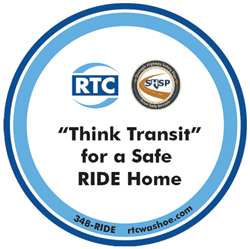|
Search the Noteworthy Practices database Nevada Funds Education and Outreach Programs with HSIP Flex Funds – NevadaOriginal publication: HSIP Noteworthy Practice Series, Use of the HSIP Flexible Funding Provision; FHWA-SA-11-02; 2011 (PDF, 2.8MB)Publication Year: 2011The Nevada Department of Transportation (NDOT) flexed $800,000 of its Highway Safety Improvement Program (HSIP) funds in FY 2009 (seven percent of the total) to fund a range of outreach and education campaigns linked to the State’s Strategic Highway Safety Plan (SHSP) emphasis areas. SHSP partners actively participated in identification of the flex projects. SHSP critical emphasis area (CEA) teams identified several projects focusing on seat belts, impaired driving, lane departures, intersections, and pedestrians. Other flex projects involving marketing and communications were identified by the Nevada Strategic Communications Alliance (SCA), comprised of public information officers from state agencies and private sector organizations with an interest in safety. The SCA manages communications and marketing related to the SHSP, and recommended strategies within the SHSP emphasis areas. The list of recommendations from the SCA and the CEA teams was reviewed by the SHSP Technical Working Group and then by the Nevada Executive Committee on Traffic Safety. The increased communications among partners from the SHSP process resulted in several key developments. The Office of Traffic Safety (OTS) reported a reduction in funding for safety belt and impaired driving media campaigns. It is doubtful that without the SHSP forum NDOT and others would have been aware of this situation. The $300,000 in flex funds, which were used to increase media buys, extended these campaigns and augmented the outreach already underway. The creation of the SCA resulted in innovative programs receiving much-needed support and expansion of successful programs statewide. NDOT invested $114,000 in flex funds in Nevada’s Prevent All Crashes Every Day (PACE) program, which increases awareness of seatbelt use and the dangers of impaired and distracted driving among teens through presentations on the program at assemblies, teacher meetings, and other events. The flex funds enabled OTS to roll out the program beyond the Las Vegas area to other teens statewide. To reach the Latino population, NDOT invested $310,000 to hire regional coordinators and develop a comprehensive Latino community highway safety awareness and education program. The objective was to engage Latino audiences, particularly first- and second-generation Latinos, through culturally responsive media campaigns, enforcement operations, and educational programming targeting highway safety messages in the areas of seat belts, impaired driving, and pedestrian safety. NDOT used $20,000 in flex funds to support the Nevada Department of Motor Vehicles (DMV) in publishing up to 150,000 educational tip cards on topics related to the SHSP emphasis areas, including teen driving, impaired driving, seat belts and child safety seats, pedestrian and bicycle safety, lane departures (move over law), and other new legislation. This project was an update and revitalization of the DMV’s existing “Quick Tip” series.
NDOT allocated an additional $56,000 to the Regional Transportation Commission (RTC) of Washoe County to provide and promote a “Safe Ride Home” with free public transportation on New Year’s Eve and St. Patrick’s Day in Reno/Sparks along with a “Don’t Drink and Drive/Safe Ride Home” education campaign. NDOT staff found the flex fund application process to be fairly simple since the agency met the requirement of obligating funds for the infrastructure projects it had identified for the year. Additionally, given the FHWA division office’s participation in SHSP implementation activities, the Nevada Division Office FHWA representative was familiar with the proposed projects. Performance measures and tracking mechanisms are included in funding agreements with each of the implementing agencies. For example, process measures for tracking successful implementation include, among others, the number of materials distributed, the number of active partners, and the number of news stories about the issue. Outcome measures include changes in target audience behavior and attitude on seat belts, impaired driving, and pedestrian safety. Key Accomplishments
ResultsFlexing of HSIP funding enabled NDOT to support multiple education and outreach programs related to the SHSP that would not have received funding or support otherwise. Included with efforts targeting the general population are programs to reduce fatalities and serious injuries among two high-risk groups – young drivers and Latinos. The successful PACE program was expanded from just one area to students all over the State. The proven effective Click It or Ticket and Over the Limit Under Arrest campaigns were also expanded. The RTC free ride program provided 7,326 rides between 7 p.m. and 4 a.m. on New Year’s Eve in 2009. While data is not available for the specific day, the number of crashes involving driving under the influence (DUI) in December 2009 was 30 percent lower than in December 2008. ContactChuck Reider Publication Year: 2011 |
